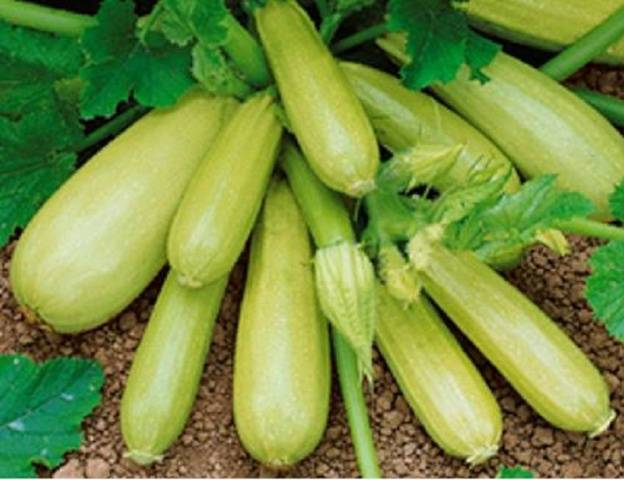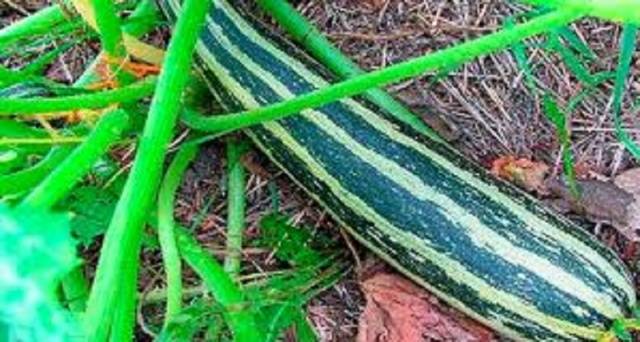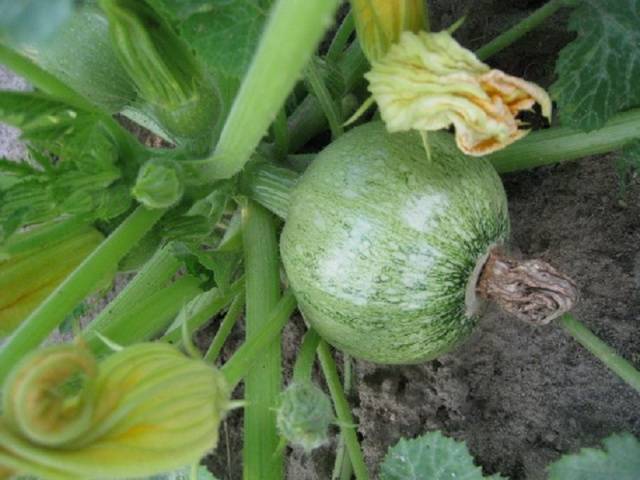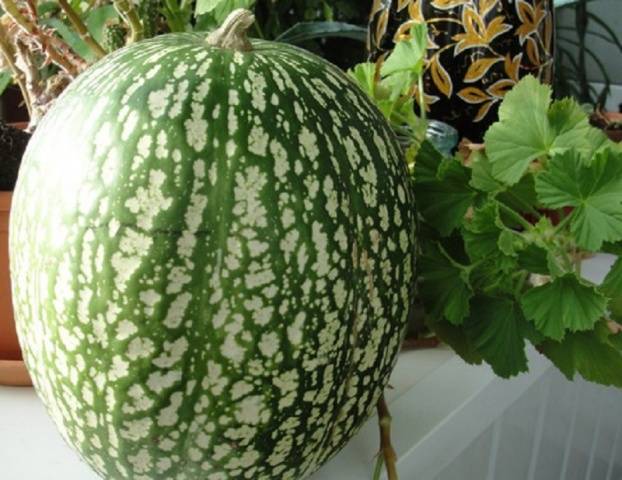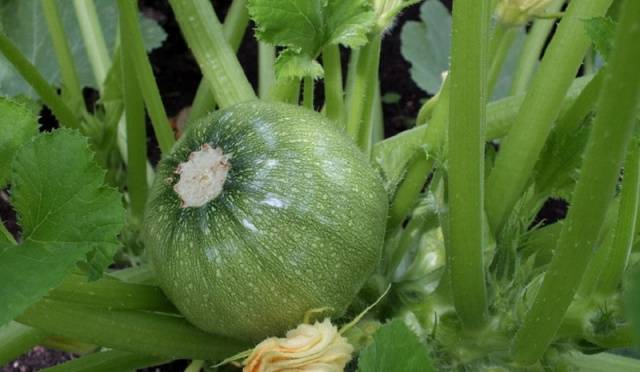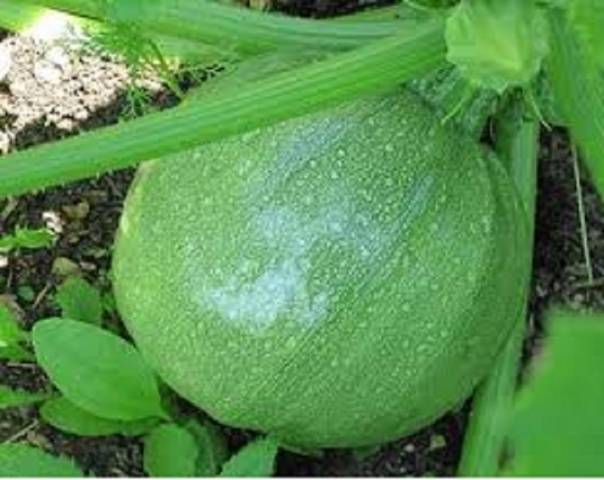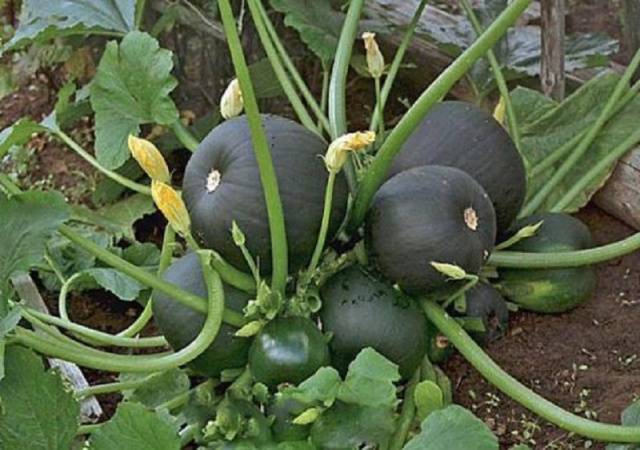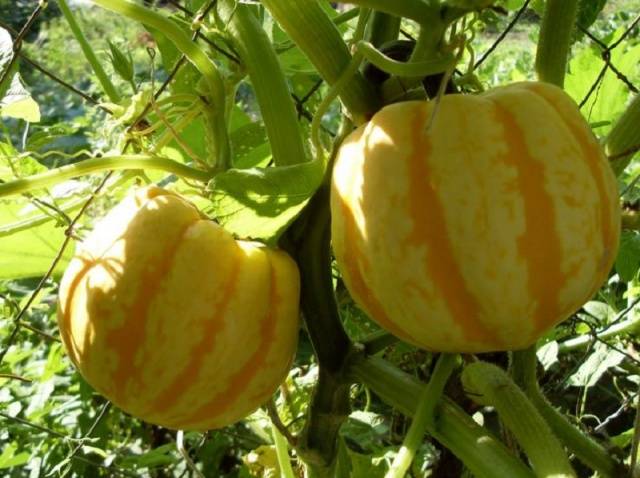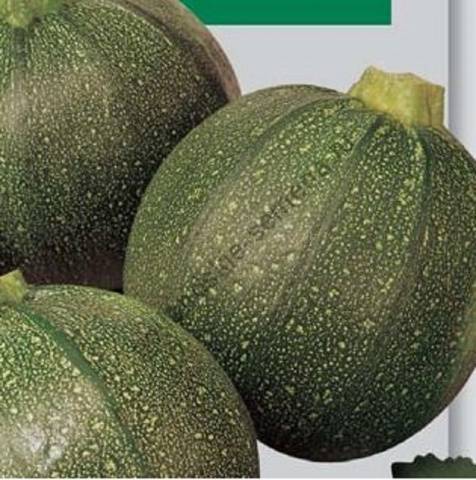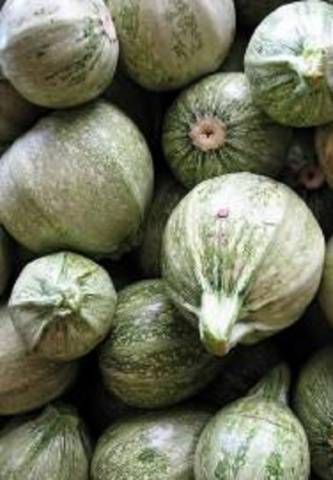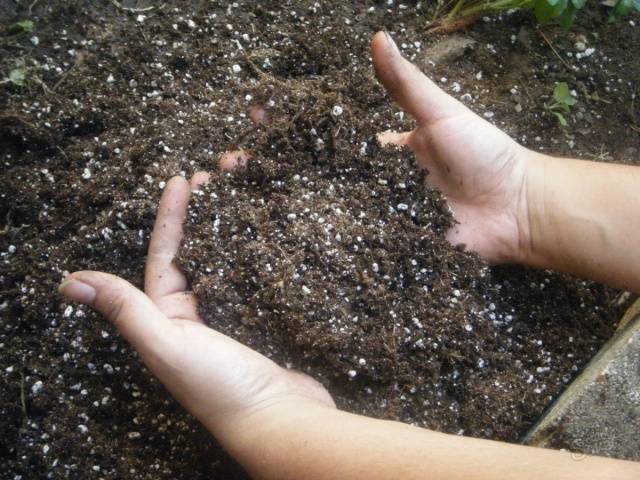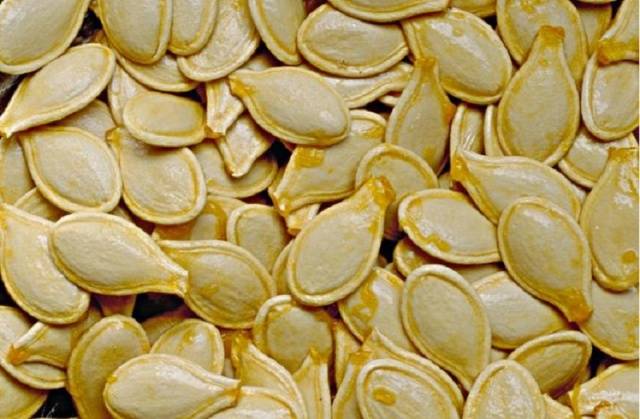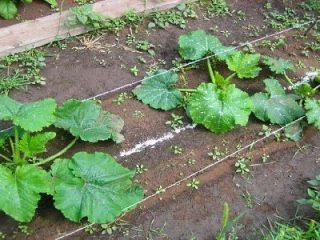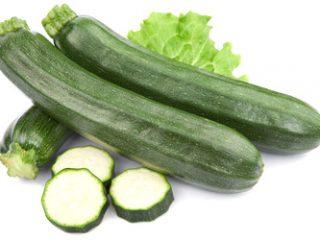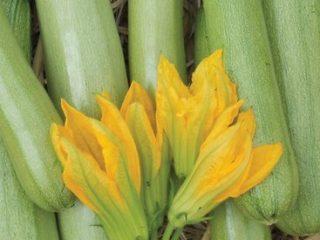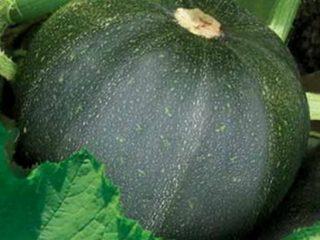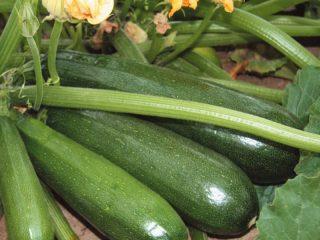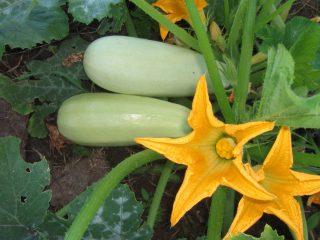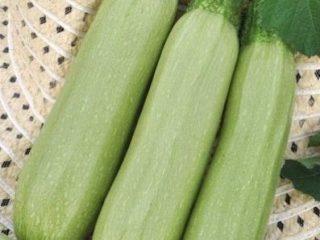Content
Zucchini is a plant belonging to the pumpkin family. It is considered a perennial member of the family, but is grown in temperate climates as an annual. Fruit zucchini has large yellowish-green, oblong shape. Such a description can be found in various gardening magazines, in scientific and educational literature. But in fact, it is a grateful vegetable with healthy and nutritious fruits. Zucchini will give a good harvest to anyone who takes at least minimal care when growing it. Housewives enjoy preparing various dishes and preparations for the winter from delicious fruits.
The usefulness and nutritional value of zucchini has long been proven. It contains almost all types of vitamins, a lot of fiber, and minerals. At the same time, the fruits are considered low-calorie. This makes it possible to classify zucchini as a dietary product. Children and elderly people are allowed to use them. Some restrictions exist for raw fruits.
The first acquaintance usually occurs with zucchini of the usual shape. Bush and semi-bush (semi-climbing) species are considered.What is attractive about this culture is that plants can be grown in any climate zone, except the Far North, and at minimal cost. There are ordinary white-fruited bushes and zucchini. The first variety has white fruits, and the second has representatives of different colors and tones - yellow, green, striped.
But, zucchini of an unusual shape, for example, round, can be considered more exotic.
Round zucchini - varieties and features
There are not as many varieties of round shape as regular ones. Which one should you prefer? Among round zucchini, the most popular are the usual varieties:
"Ball"
Early ripe round zucchini. Refers to the species bush with medium branching. It has medium leaves of light green color. The fruits are original, spherical, weighing up to 1 – 1.3 kg. The color is whitish or slightly green with the presence of diffuse spotting. The taste is excellent and is considered a plant with a high degree of productivity. The first fruits can be obtained already on the 50th day after germination. Zucchini "Ball" is highly valued in cooking as a variety for stuffing or baking. When growing, you need to pay attention to the following features:
- demanding of comfortable thermal conditions;
- development improves after applying organic fertilizers;
- Resistant to fruit putrefaction and powdery mildew.
A wonderful variety of round zucchini is grown in different ways. The seedling method works well - you can get an earlier harvest. Direct sowing of seeds into the soil also gives stable results. Seeds are sown for seedlings in April, and the plants are planted in the ground after a month and a half. At the same time, seeds are sown directly into the ground. This usually happens in May-June. The usual planting pattern of 60x60 cm is used.
"Watermelon"
Late-ripening round zucchini, bred by crossing with watermelon. Externally, it is very similar to a watermelon; it has a round fruit with large pink seeds. Another round zucchini with a long shelf life. It lasts almost until the new harvest. Young fruits are consumed with the skin, and during storage only the pulp. A climbing plant, it requires a large distance between holes (at least 2 m). Recommendations for agricultural technology do not differ from growing ordinary-shaped zucchini.
Representatives of zucchini
"Kolobok"
Early ripening round zucchini. It is enough for a month and a half to pass from full germination, and the first fruits can be collected. The zucchini has a compact bush, but when there is a lack of light, it can throw out lashes. It is recommended to harvest when the fruits are still small (milk ripeness). Small “bells” are very good for culinary highlights. Mature, ripe fruits resemble pumpkin both in taste and appearance. The difference is that the crust does not harden for a long time and peeling the zucchini is much easier. The average fruit weight reaches 600 g. The round squash variety “Kolobok” is resistant to common pumpkin diseases.
"Tintoretto"
Another early ripening zucchini variety. The period from germination to harvest takes 48-50 days. Compact bush plant with rounded fruits weighing up to 2.2 kg. The color of the fruit changes as it ripens from light green to yellow with splashes. Valuable Features:
- stable high yield;
- fruits of original shape;
- good keeping quality;
- excellent transportability;
- taste and culinary qualities of a high order.
The seeds of round Tintoretto zucchini are large. Planted according to the 70x70 pattern, with a sowing depth of 5-6 cm.Sowing dates are from May 25 to June 5, and in mid-July a high yield of up to 10 kg per 1 square meter is harvested. m. Zucchini of this round variety are grown in open ground.
Hybrid varieties
"Burzhuin F1"
An early ripening hybrid variety of zucchini. Only 45 days pass before the fruits are harvested. The bush is powerful with a large number of female flowers. The advantages of the variety are considered:
- high productivity;
- original shape of the fruit;
- good commercial quality;
- large-fruited.
It has dark green fruits weighing up to 3 kg. Round zucchini is excellent for growing both in greenhouses and in open ground. Features of planting:
- diagram - 60x60cm;
- density – 1.5 per 1 sq.m;
- depth – up to 5 cm.
The optimal time for sowing zucchini is in May. The variety is demanding of all care components. Needs proper watering, nutrition, lighting and temperature conditions. Thanks for this with a good yield of up to 10 kg per 1 sq. m area. The hybrid is used in cooking to prepare various dishes. Round zucchini is well suited for stuffing. Almost all housewives prepare this dish.
"F1 Festival"
An excellent hybrid variety. It has excellent taste and decorative appearance. The diameter of the fruit reaches 15 cm. There are white-green stripes along the entire length, in which the green color is replaced by yellow as it ripens. Record holder for shelf life. This variety of round zucchini can be enjoyed 10 months after harvest. The taste doesn't change at all. The zucchini pulp is tender, orange in color, and the appearance is very beautiful.
The hybrid is grown in two ways - seedlings and direct sowing in the ground. Zucchini seedlings will have to be planted only after full confidence in the absence of frost. Very responsive to good soil preparation.Before planting, loosen the soil with the addition of compost. This will also serve as a good enrichment for the soil and will enable round zucchini seedlings to more easily tolerate temperature fluctuations. They like mulching with humus or peat and regular watering. When sowing directly, zucchini seeds are placed at a depth of 5-6 cm.
Round foreigners
"Tondo di Piacenza"
High-yielding early variety of Italian breeders. The fruit ripening period is 55 days. Zucchini has original spherical fruits in dark green color. They have a pleasant taste, especially when unripe (fruit diameter is 10 cm) and are intended for open ground. Recommendations for agricultural technology do not differ from the usual requirements for growing zucchini. Planted by seedlings and sowing in the ground. The fruits are often used fresh for preparing salads, as well as for baking, stuffing and winter preparations.
"De Nice"
Super early high-yielding variety. It takes 40 days before fruiting begins. The earlier the fruit harvest begins, the longer the harvest period of round squash lasts. A plant with a compact bush without the formation of vines. The fruits are small (up to 15 cm in diameter), light green in color with a delicate thin peel. The pulp has almost no seeds. The seedling method of cultivation makes it possible to obtain round fruits much earlier than conventional varieties. When sowing in the ground, this indicator shifts to a later date. Seeds for seedlings are sown in the last week of April, direct sowing - early June. Small unripe fruits give the housewife room for imagination when preparing original snacks.
Nuances of agricultural technology
It is customary to grow round zucchini using two technologies:
- seedling method;
- direct sowing into the ground.
The plant is heat-loving, so it is better to provide it with comfortable conditions. To get high-quality seedlings, round zucchini seeds are sown in April. Experienced gardeners compare their actions with the lunar sowing calendar. Some consider the germination procedure mandatory. This will shorten the time before germination. For seedlings of round zucchini, prepare containers with fertile soil and provide the necessary heat and lighting. As soon as the shoots appear, you can plant the seedlings in open ground within two weeks. This technology will make it possible to harvest round zucchini earlier, but the fruits will be unsuitable for storage. They will need to be used as they mature.
You will have to sow round zucchini seeds into the ground a little later. It is necessary for the earth to warm up and the threat of frost to pass. The seedlings of round zucchini will withstand the cold, but the frost will immediately destroy the tender sprouts. The main period is the end of May or the beginning of June. With this technology, you will have to immediately take into account the planting scheme so as not to remove the plants later for thinning. Round squashes are semi-vining plants, so they need to have plenty of room to grow.
The soil is fertilized and loosened. Seeds are sown to a depth of no more than 5 cm. In the future, the plants require timely watering and fertilizing. Zucchini has a large leaf mass, so it needs additional nutrition.
It is necessary to inspect plants to prevent diseases or pest attacks. Things to watch out for:
- bacteriosis;
- powdery rose;
- root rot.
The main pests of round zucchini are cutworms and slugs.
Let's talk about seeds
This is a very important criterion for a good harvest of round zucchini. High-quality material gives the proper result.
If you decide to grow hybrid varieties of round zucchini, you should pay attention to the manufacturer. Find information and reviews from those who have already sowed such seeds. It is not recommended to germinate hybrid seeds. Water will remove all substances that are on the seed that improve germination and stability.
Seeds of simple varieties are usually germinated. To preserve the variety they like, many people harvest the seeds themselves. What benefits does this provide? The gardener chooses a plant that is free from defects and pest damage. The zucchini has already gone through its life cycle in the garden and has acquired resistance to the conditions of a particular site. Therefore, the germination of such seeds is always better. The seeds leave healthy and beautiful fruits. They are removed from dry plants. To check the readiness of the fruit, run a fingernail along the skin. Those that leave no trace are removed. There is no need to rush. Unripe seeds of round zucchini will produce poor germination next year.
Now the fruits are ripening. This takes about 20 days. The room must be ventilated. Then the zucchini is cut lengthwise and the seeds are selected. They are not washed or fermented, but only dried well without the sun.
Store collected seeds in bags, bags (paper), glass jars. Paper bags need to be pierced with a needle to increase air access. Only very well-dried seeds can be stored in jars.Each variety is signed, always indicating the year of collection. Store in the cellar, on the bottom shelf of the refrigerator, in a cool room (no dampness!). The optimal period is up to 4 years. The seeds remain valid for 8 years, but the best germination rate is for two to three year olds. Before planting, everything is checked for germination.
Round zucchini – original and tasty. More and more gardeners are choosing unusual varieties to get a good harvest and decorate their beds.
